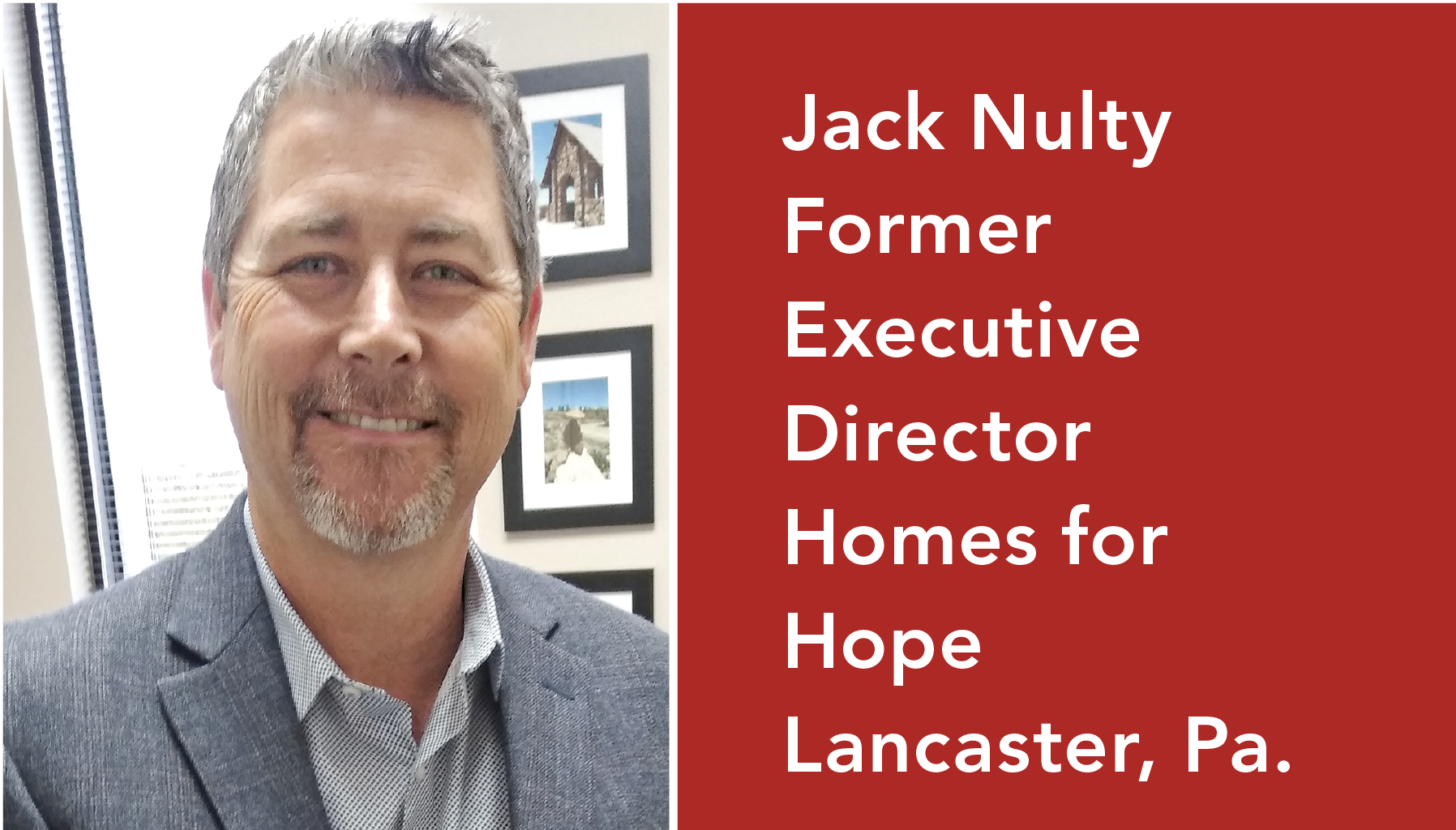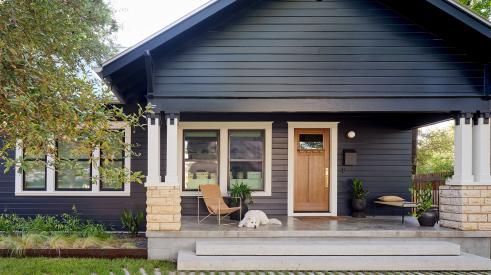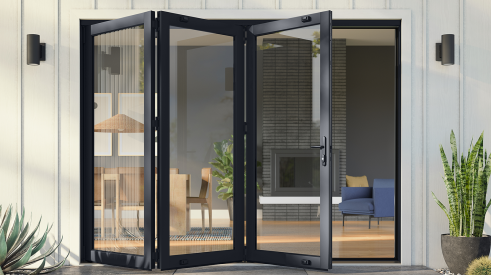Jack Nulty was supplying doors and millwork to home builders in Dallas-Fort Worth when Stephen Brooks, CEO of Grand Homes, told him about a house he was building with Homes for Hope. Brooks was going to sell the home and donate the profits to the charity, which works globally in 16 countries to help impoverished people start small businesses. Nulty joined other suppliers and trades to donate or discount products and services to boost the margin on the $350,000 house to about $100,000. That money enabled 5,000 families to become self-sufficient by launching or expanding their businesses with “microfinance” loans averaging about $50.
Nulty eventually became Homes for Hope’s executive director. Now, after eight years in that role, he’s stepping down and Matthew Baehr, a former land surveyor with experience leveraging corporate partnerships for humanitarian organizations, will take over.
We asked Nulty about the charity, which currently has 38 participating builders and has generated over $10 million in revenue from more than 100 homes since its founding in 1998.
RELATED
Q Why is this kind of giving considered helping in the “right” way?
A When you can empower somebody to be the provider for their family, that’s the best way to do it. If you and I were to shoulder the responsibility to provide for someone else’s family, it would be pretty difficult. What do you do when tomorrow comes and you don’t have the money to send to them? It’s best when you can allow people to provide for their own families.
Microfinance is relatively new. In 2006, Muhammad Yunus and Grameen Bank won the Nobel Peace Prize for their work on microcredit, and it really is the best way to empower people living in the developing world.
Q How did you get involved with Homes for Hope?
A After I heard about the impact of Homes for Hope, I decided to dive deeper and see for myself. My wife, Tammy, and I bought airline tickets to the nearest country where Hope was working. We hired a translator and went out to the field and met clients.
We flew to the Dominican Republic, where our interpreter took us to meet Bienvenida Nina, a woman selling chicken by the roadside. She told us a little about her life. Nina was married at 13, pregnant at 14 with her first child, who passed away, and then she had three more kids. Her neighborhood was hit by a hurricane on her 21st birthday.
There were no relief services, so the day after the hurricane, Nina did what she’d always done: got up and found a way to make an income so her family could eat. In the morning, she’d collect firewood, go into town, purchase the chicken, prepare it over the fire, and sell it to people on the roadside as they passed by. Then she’d take the profits and walk 30 to 45 minutes into town to buy another chicken. If the weather was good, she might turn that inventory four or five times with the hope of earning enough to buy food for her family and a chicken for the next morning. Her goal: to reach $5 a day.
There was a group of women there that Homes for Hope helped to fund, and they saw Nina working extremely hard and invited her to be part of their group. They offered her a loan so she could expand her business to make more money and better provide for her family.
Nina put together a small business plan. It was reviewed by the women in the group and they approved. Nina then applied for a $200 loan—8,000 pesos—something she couldn’t imagine anybody would ever give her.
Q What did she do with the loan?
A Nina figured out how much chicken could she sell in a day if she could be in a place where she didn’t have to close her business if it rained. She figured out that she could purchase a propane tank much like the one I have on the backyard grill on my patio. That would provide heat, so she didn’t have to collect wood for a fire in the morning and could get to work earlier. She put some of that money down to lease a concrete structure that could be locked up. With that $200 loan she was able to change her income from $5 or less a day to earning over $2,000 a month and employing people.
Q How does a builder get involved?
A It takes a builder with a heart for wanting to make a difference in people’s lives; wanting to empower more people who need a solution to end their own poverty. This is not a solution where giving a handout makes any sense. This is a charity that comes alongside people and provides so that they use the skills they have to provide for their own families.
Charitable homes organizations don’t present this type of a program. For them, it’s generally a case of here's a person who needs a home, so let’s build one and give it to them.
It takes a builder who has a heart to do that, to empower people to take the skills they have—whatever those might be—whether it’s to start a restaurant with a spice recipe that their mother taught her like Bienvenida, or someone who sews for a living.
It’s really easy for them to get involved as well. It’s very simple: They find Homes for Hope on the Internet and contact executive director Matt Baehr. He can walk them through the steps. All you have to do is be willing to build one of your homes and, instead of taking the profit from that home and putting it all back into your business, you pour that into the businesses that Homes for Hope serves around the globe.
Q What support do builders receive?
A Homes for Hope provides somebody who will come out and share what this is all about. We also have development staff all around the country who can come in and share that message as well. Homes for Hope walks alongside the builder and provides all the things they need, whether it be hosting special events like a ground-breaking, trade partner luncheon, or a ribbon cutting, or providing the collateral, invitations, and press releases. We do all of those things for the builder, and we’re able to do that because builders all across the country support Hope to do that. It doesn’t cost the builder anything.
Q Is there resistance from suppliers or trades to donate?
A There’s really not that much resistance. Most of the guys who participate run great businesses and they know what it is to start a business. They know what it's like for someone to provide them a loan, so Homes for Hope really resonates with them, but it can also be confusing in the beginning.
Charitable homes organizations don’t present this type of a program. For them, it’s generally a case of here's a person who needs a home, so let’s build one and give it to them. Homes for Hope gives people the same thing that builders, suppliers, and trades needed when they started their businesses. So, from that standpoint, they're a whole lot more receptive to jumping onboard.
The other thing is they’re not required to be part of this. When a Homes for Hope builder goes out there, the message is pretty simple: If this is something you'd like to be part of, we'd like you to be a part of it. If not, no problem. We’re going to raise whatever we raise off of this home when we sell it, and that’s great. That also led to our retention because most of the builders who build one, build more.
Q Besides builders and the trades, how can other people in the industry participate?
A There are people on the outskirts of our industry, like lenders. There’s a lender that comes to mind in Greenville, S.C. He was at an event and heard about Homes for Hope. Then he went out to the builders he was providing capital to and said, "Hey, would any of you guys be interested in building Homes for Hope homes?"
So you can be a professional in our industry and also be an advocate and just talk to people you do business with. As a result, we have several people in Greenville building for Homes for Hope, all because a banker thought maybe a builder in his area would do one. As a result of that, thousands of families are being served throughout the globe.
I’ve had builders who've been part of a lot of other different things and it’s refreshing for them to be part of something that doesn’t interrupt their everyday way of doing business.
Q Are most builders repeat participants?
A Yes, most builders will start building one home, and it just works its way into their culture because it's easy to do. They’ll build a house just like any other build. It will go through the same construction cycle it normally goes through. So there’s not anything different they have to do. They don’t have to change their business. They don’t have to stop for a fundraising event. It just keeps going, so it’s really easy. I’ve had builders who've been part of a lot of other different things and it’s refreshing for them to be part of something that doesn’t interrupt their everyday way of doing business.
Q How is Homes for Hope funded?
A Some of the builders agree that they'd like to cover some of the cost of the nonprofit's daily operation. So they allow a certain percentage of their donations to go toward that.
With regard to Homes for Hope and Hope International, a lot of the sophisticated philanthropists will ask questions like what percentage of funding goes into programs? Hope International received 12 consecutive four-star ratings from Charity Navigators. The way you achieve that is to have at least 80% of your funds go directly to the program and 20% to operations. For us, that's super easy to do, and we do that year in and year out. People like to hear that.
Q Do you have other anecdotes about loan recipients?
A I get to travel and meet clients who received loans. I was in a loan meeting one day and I was going around the room asking, What do you use your loan for? There was a gentleman in the room who said, "I’m a home builder." And that really struck me. He had used his loan to buy a wheelbarrow he could use to transport concrete to the jobsite to pour footings, so he could help build houses for families. He got a loan to start a home building business. I asked him if that was his dream, and he said, "No, my dream is to start a business selling men’s clothing in the town square."
It’s interesting to think about the fact that home builders are actually helping people living in undeveloped parts of the world to start a home building industry. Isn’t that something!
Access a PDF of this article in Professional Builder's December 2019 digital edition
Advertisement
Related Stories
Construction
Q+A With Jenny Kerr Schroen and Chris Eccleston: Grit Leads to Greatness
The co-authors of Grit Leads to Greatness: An Epic Quest Built to Change the World are getting an enthusiastic response to their book and are finding its message resonates deeply with students, school administrators, and parents alike
Q+A
A Builder Discusses Product Strategy
Which products make a difference? Andrew Houlihan of Houlihan Building Company dives into what kinds of products matter to builders and their clients, including the Marvin Elevate® and Essential™ Collections
Q+A
Drama and Impact: The Rise of Scenic Doors
The popularity of large, dramatic scenic solutions like the Marvin Elevate® Bi-Fold door continues to grow. Michael Wandschneider, Group Director of Product Management at Marvin, explains what’s behind it.








